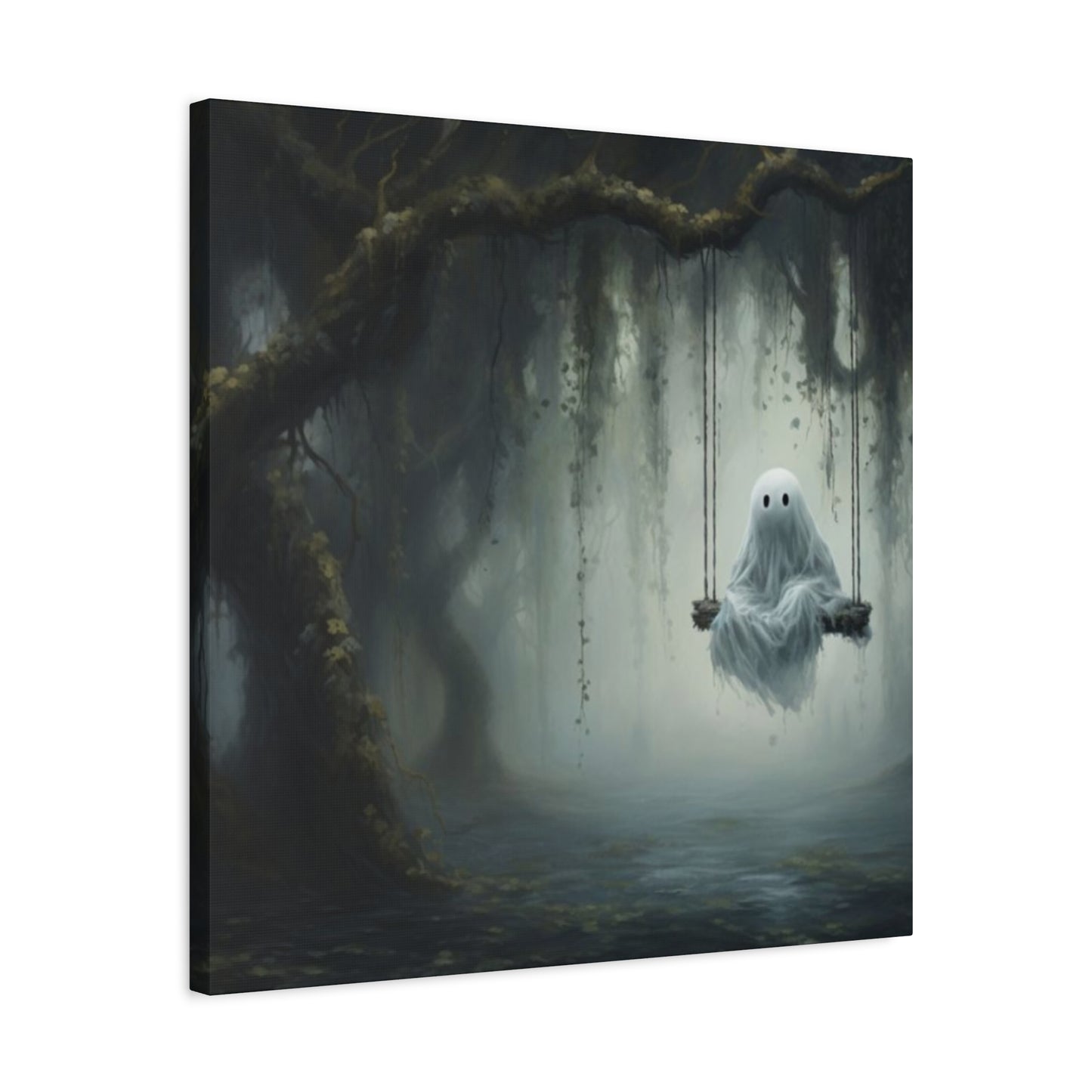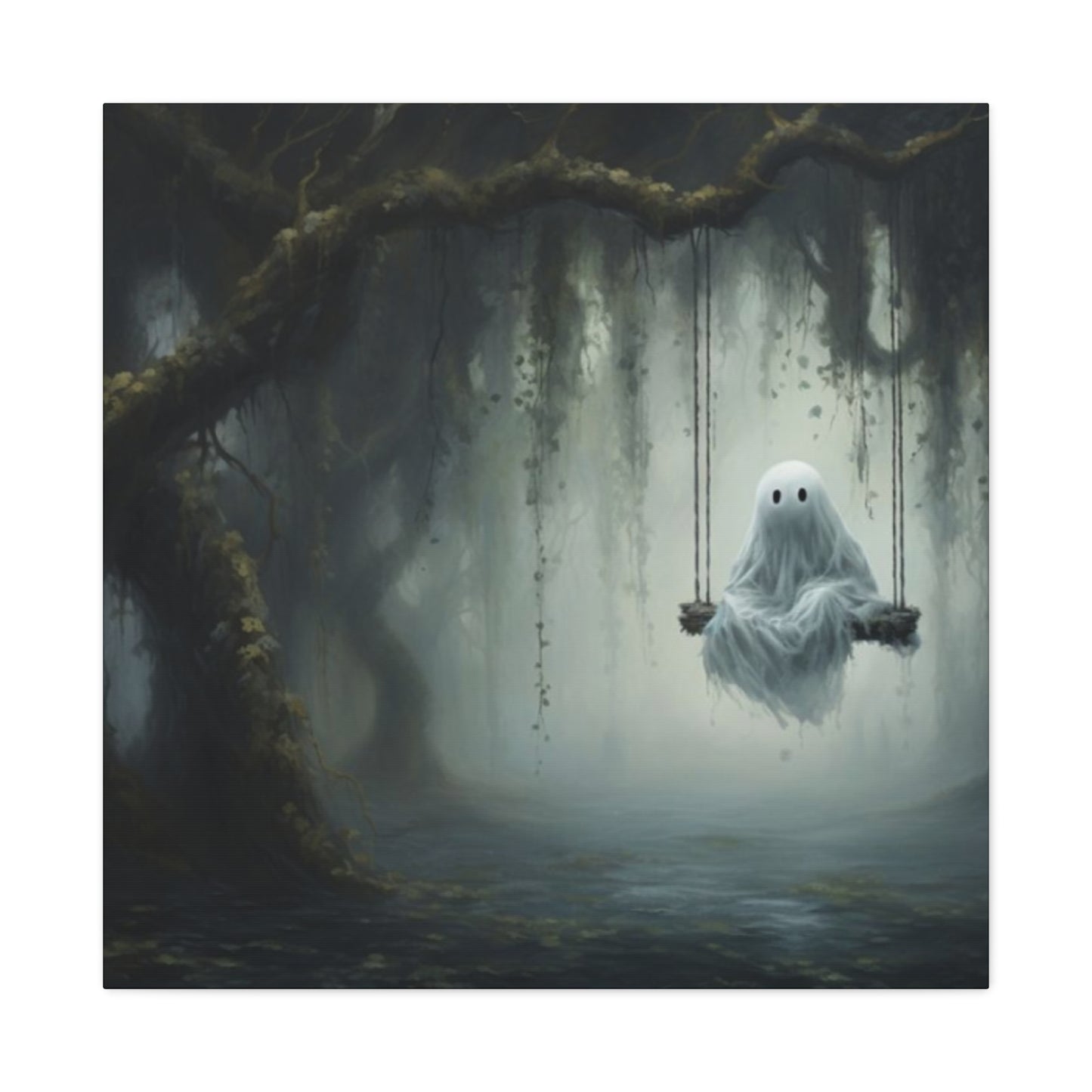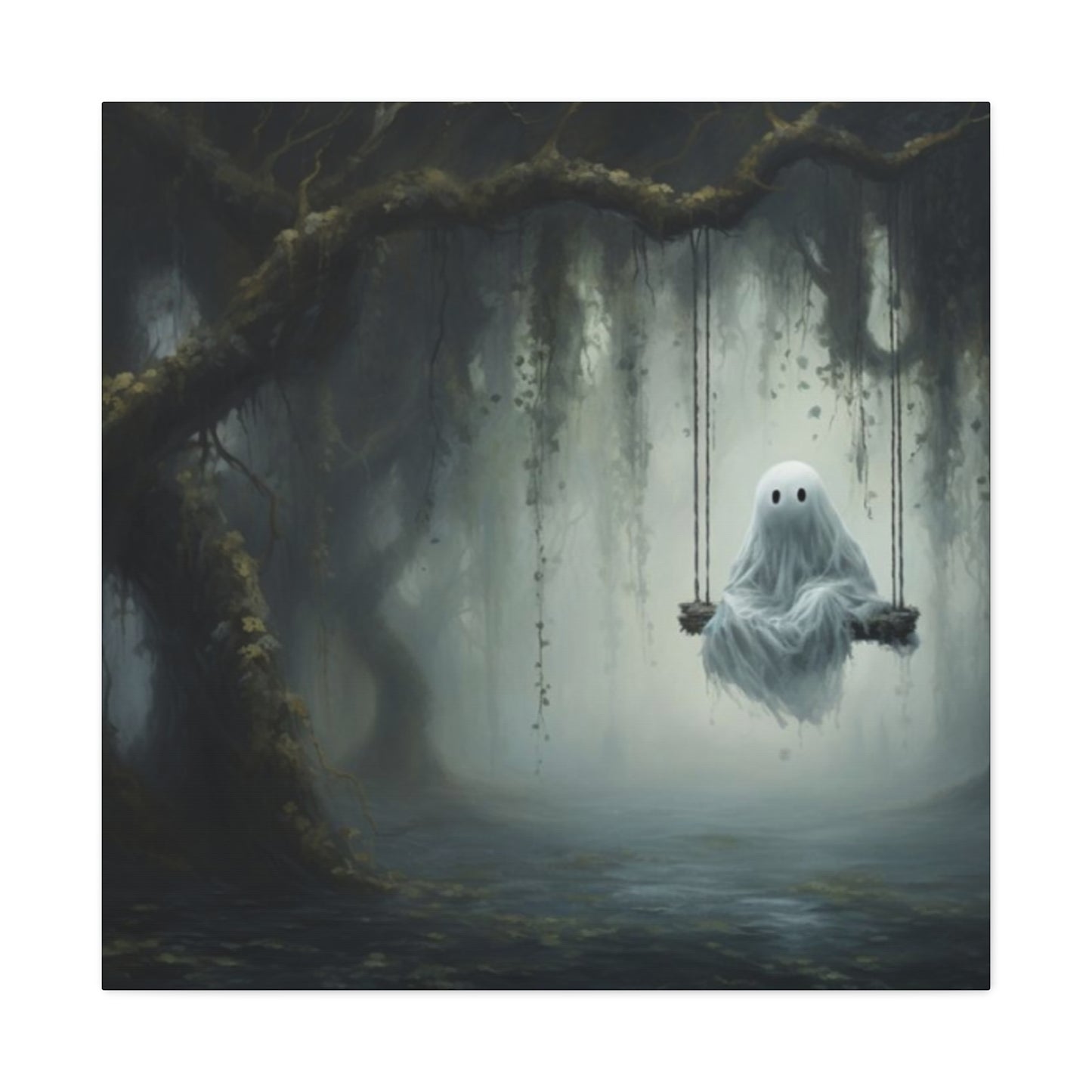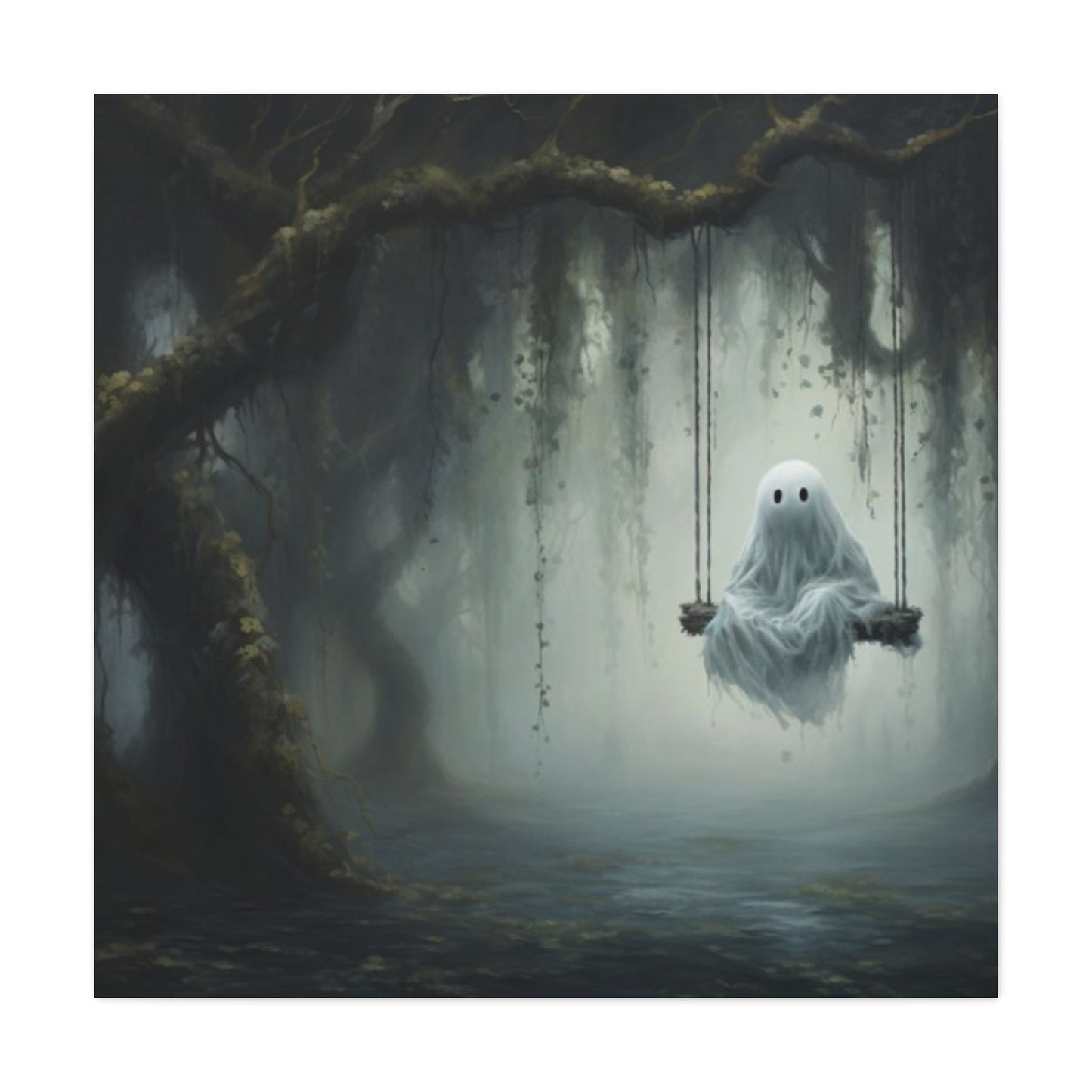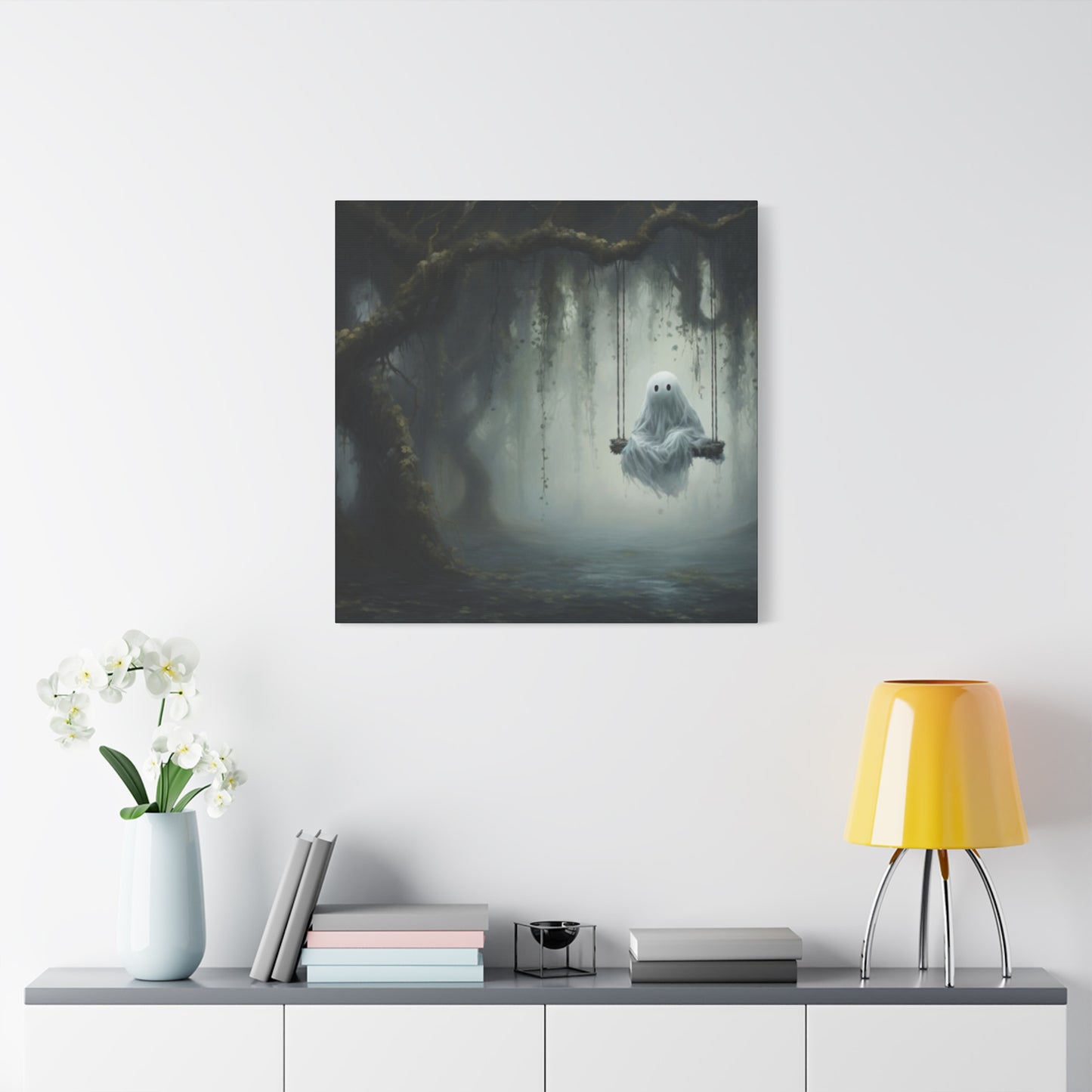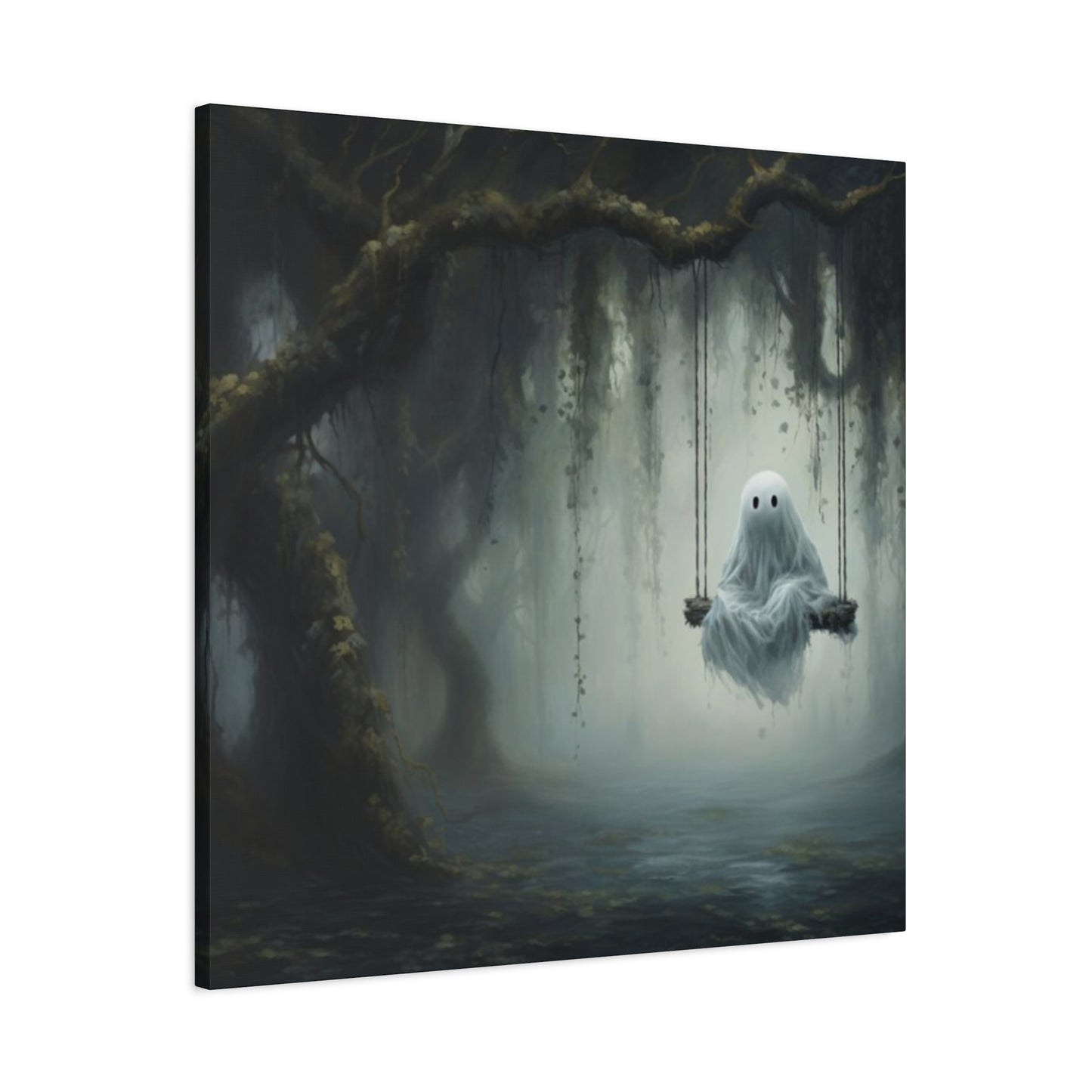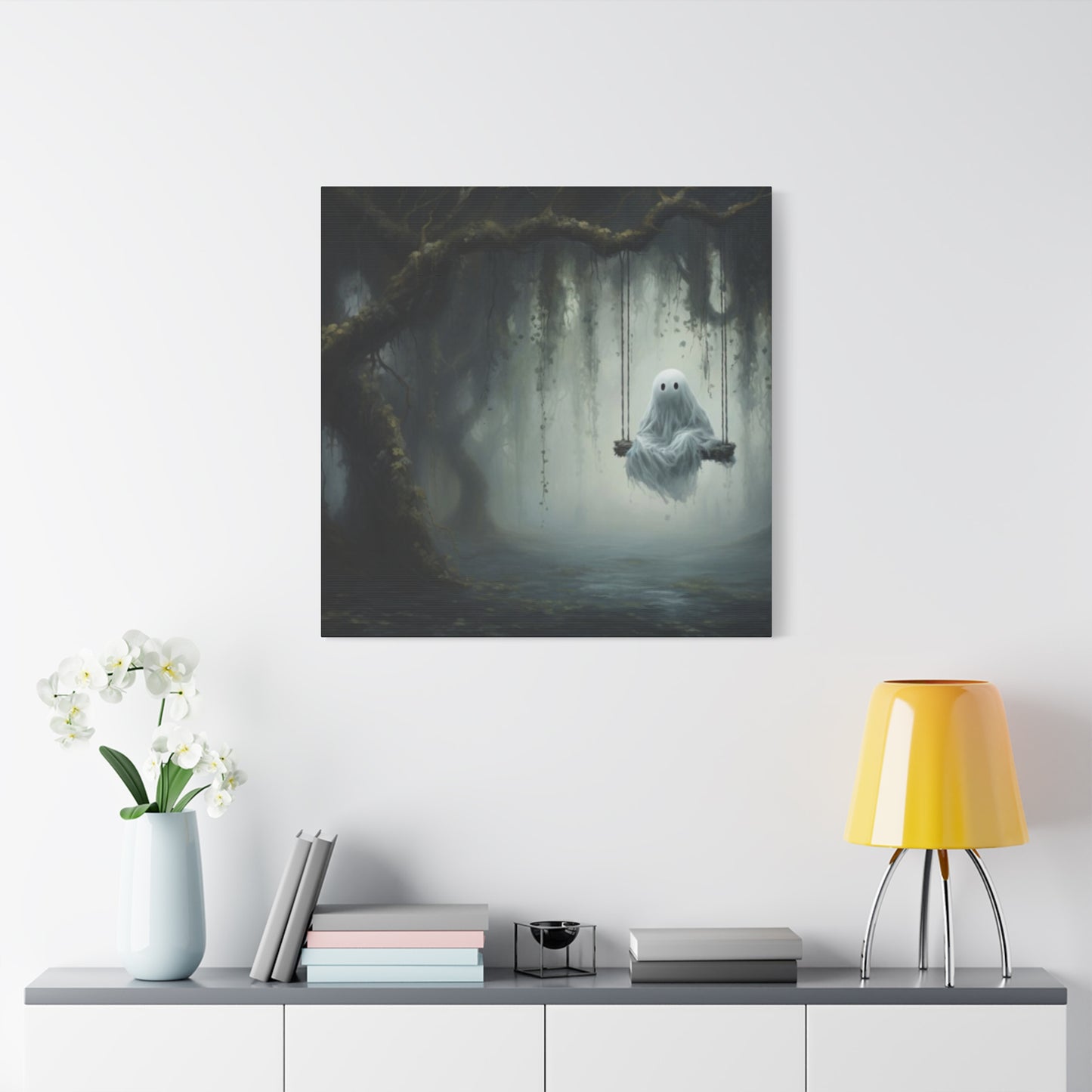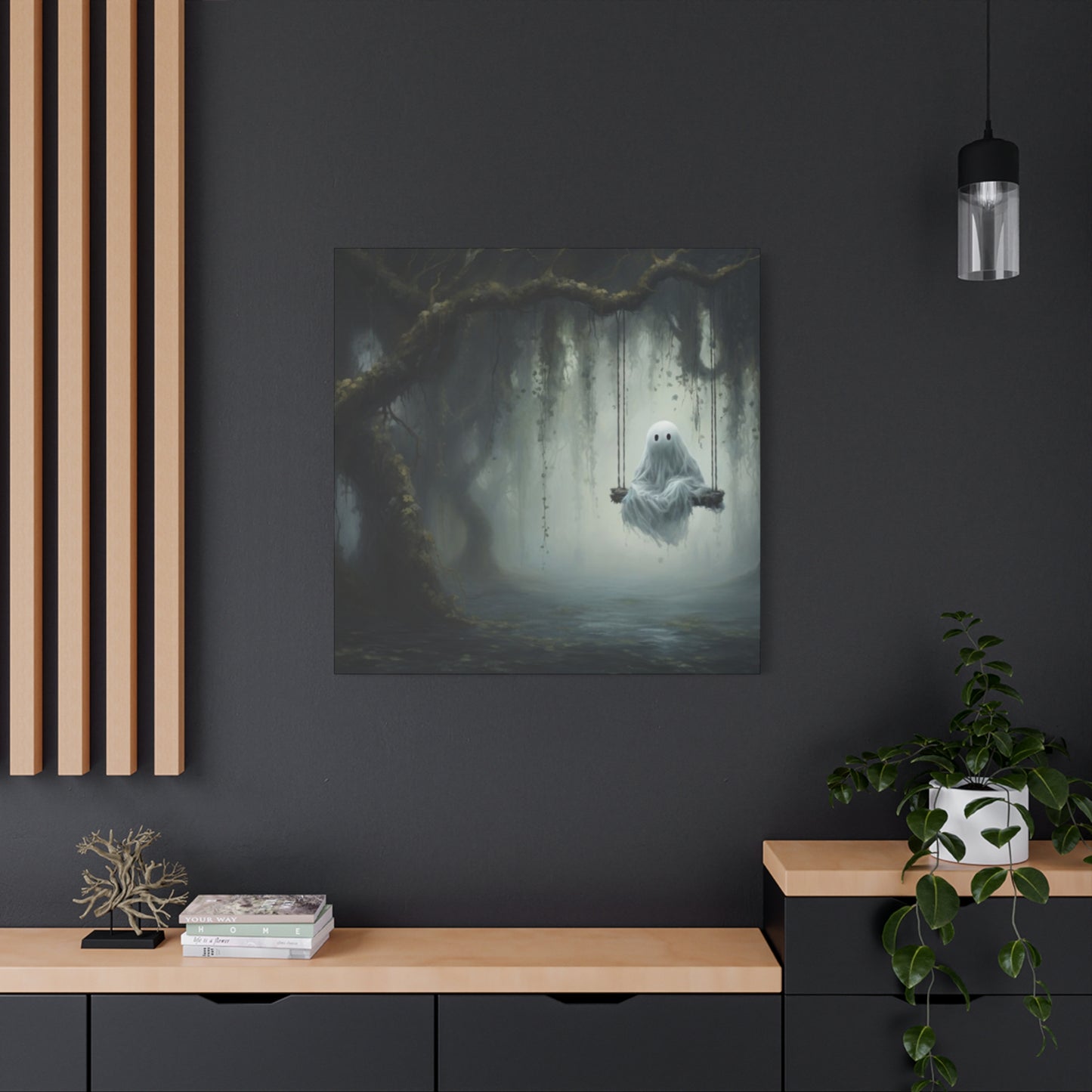Complete Guide to Swinging Ghost Wall Art for Your Home
Swinging ghost wall art has emerged as a captivating trend that bridges the gap between whimsical charm and supernatural allure. These ethereal pieces capture the imagination with their depiction of spectral figures suspended in motion, creating a sense of movement and mystery that transforms any room. Whether you are drawn to the playful innocence of cartoonish phantoms or the darker elegance of gothic spirits, swinging ghost artwork offers endless possibilities for personal expression and atmospheric enhancement. This comprehensive guide explores every aspect of incorporating these enchanting pieces into your living environment, from selecting the perfect style to maintaining their beauty for years to come.
The appeal of swinging ghost imagery lies in its unique ability to evoke multiple emotions simultaneously. These pieces can be simultaneously lighthearted and mysterious, nostalgic and contemporary, welcoming and slightly unsettling. The swinging motion captured in these artworks suggests a liminal state between worlds, a perpetual movement that neither fully arrives nor departs. This quality makes such pieces particularly versatile, suitable for those who appreciate subtle supernatural themes without overwhelming their décor with overtly dark or frightening imagery.
As we delve into the world of swinging ghost wall art, we will explore how these pieces can enhance various environments, from children's bedrooms to sophisticated living areas. We will examine the technical aspects of canvas printing and preservation, the cultural symbolism embedded in ghost imagery, and the creative ways artists interpret this timeless subject. Whether you are a seasoned collector or someone just beginning to explore decorative artwork, this guide will provide you with the knowledge and inspiration needed to make informed decisions about incorporating swinging ghost wall art into your home.
Spooky Charm in Swinging Ghost Art
The concept of spooky charm represents a delicate balance between the eerie and the endearing, and swinging ghost art embodies this duality perfectly. These pieces manage to capture the essence of supernatural folklore while maintaining an approachable quality that prevents them from being genuinely frightening. The swinging motion depicted in these artworks suggests a playful spirit rather than a malevolent presence, as if the ghost is enjoying an eternal moment of childlike freedom. This interpretation transforms what could be an unsettling image into something that feels almost nostalgic, reminding viewers of carefree days spent on playground swings or lazy afternoons in backyard gardens.
Artists who create swinging ghost art often employ various techniques to achieve this balance between spooky and charming. Soft color palettes featuring muted pastels or gentle grays help soften the potentially frightening aspects of ghost imagery. The addition of whimsical elements such as flowing fabric that resembles sheets, friendly facial features, or surrounding elements like flowers or stars further emphasizes the playful nature of these pieces. Some artists choose to depict their ghostly subjects with subtle smiles or peaceful expressions, suggesting contentment rather than torment. These artistic choices work together to create pieces that celebrate the supernatural without inducing genuine fear or discomfort.
The charm inherent in swinging ghost art also stems from its ability to tap into universal experiences and emotions. The image of a figure on a swing resonates with memories of childhood, freedom, and simple pleasures. When this familiar, comforting image is combined with the mysterious nature of ghosts, it creates a fascinating cognitive dissonance that captures attention and imagination. This juxtaposition invites viewers to reconsider their assumptions about the supernatural, suggesting that not all things unknown need be feared. The swinging ghost becomes a symbol of peaceful existence beyond the physical realm, a reminder that mystery and comfort can coexist harmoniously.
Furthermore, the spooky charm of these pieces makes them remarkably versatile in terms of seasonal display. While they certainly fit the Halloween aesthetic, their gentle nature allows them to remain displayed year-round without feeling out of place. The artwork serves as a subtle nod to those who appreciate gothic or supernatural themes without requiring a complete commitment to dark décor. This versatility makes swinging ghost art an excellent investment for those who want artwork that can transition through seasons and evolving personal tastes while maintaining its appeal and relevance.
Playful vs Eerie Ghost Wall Art Styles
The spectrum between playful and eerie ghost wall art styles offers collectors a wide range of options to suit different preferences and purposes. Playful ghost artwork typically features bright colors, simplified forms, and friendly facial expressions that immediately communicate accessibility and fun. These pieces often incorporate elements of cartoon aesthetics, with exaggerated features, bold outlines, and cheerful compositions. The ghosts in playful artwork might be depicted with big eyes, sweet smiles, or engaged in amusing activities beyond simply swinging. Background elements in playful pieces often include sunshine, rainbows, flowers, or other traditionally positive imagery that reinforces the lighthearted tone. This style appeals particularly to families with young children, educators looking for seasonal classroom decorations, or anyone who appreciates whimsical art that brings immediate joy to a room.
In contrast, eerie ghost wall art embraces the mysterious and slightly unsettling aspects of supernatural imagery while still maintaining artistic beauty. These pieces typically employ darker color palettes, featuring deep blacks, midnight blues, stormy grays, or even blood reds. The composition may include elements like bare trees, full moons, fog, or abandoned structures that enhance the atmospheric quality. The ghosts themselves might be rendered with more ambiguous features, perhaps lacking distinct facial characteristics or appearing more translucent and ethereal. The swinging motion in eerie pieces might suggest restlessness rather than playfulness, creating a narrative of unfinished business or eternal wandering. This style appeals to those who appreciate gothic aesthetics, horror enthusiasts, or collectors who want artwork that provokes contemplation and creates dramatic visual impact.
Between these two extremes lies a rich middle ground where many artists work to create pieces that blend playful and eerie elements in varying proportions. Some artwork might feature a charming ghost figure but place it in a slightly ominous setting, creating tension between the subject and its environment. Others might use sophisticated color techniques that shift the mood depending on lighting conditions, appearing more playful in bright daylight but taking on eerie qualities in dimmer evening light. This middle category offers perhaps the greatest versatility, as these pieces can adapt to different contexts and be appreciated from multiple perspectives depending on the viewer's mood and the surrounding décor.
The choice between playful and eerie styles ultimately depends on several factors including the intended location of the artwork, the existing décor, the preferences of household members, and the emotional atmosphere you wish to create. Playful pieces work beautifully in children's rooms, family gathering areas, or anywhere you want to maintain a consistently upbeat and welcoming mood. Eerie pieces excel in personal retreats, libraries, studies, or entertainment areas where a more dramatic and contemplative atmosphere is desired. Understanding these distinctions helps collectors make choices that will provide long-term satisfaction and enhance rather than conflict with their living environments.
Small vs Large Swinging Ghost Canvas Prints
The decision between small and large swinging ghost canvas prints involves considerations beyond simple aesthetic preference, encompassing practical concerns about room dimensions, visual impact, and display flexibility. Small canvas prints, typically ranging from six inches to eighteen inches in their largest dimension, offer numerous advantages for specific situations. Their compact size makes them ideal for creating gallery walls where multiple pieces can be arranged to tell a visual story or create a cohesive theme. Small prints work exceptionally well in tight locations such as hallways, bathroom walls, small bedroom nooks, or office cubicles where larger pieces would overwhelm the available area. They also provide excellent opportunities for seasonal rotation, as storing multiple small pieces requires minimal closet or storage room availability.
Small swinging ghost canvas prints allow collectors to experiment with various artistic styles and interpretations without making significant spatial or financial commitments. You might choose several small pieces depicting ghosts on different types of swings, rendered in various artistic styles, or showing different emotional tones. This variety creates visual interest and prevents the predictability that can sometimes occur with a single large statement piece. Additionally, small prints make excellent gifts, as their size makes them universally suitable for most living situations and their lower price point makes them accessible for various gift-giving occasions. The intimacy of small artwork also creates a different viewing experience, inviting people to step closer and examine details that might be overlooked in larger pieces.
Large canvas prints, typically measuring from twenty-four inches to sixty inches or more, command attention and serve as focal points within a room. A substantial swinging ghost canvas immediately establishes itself as a primary visual element, setting the tone for the entire environment. Large prints work magnificently above furniture pieces like sofas, beds, or console tables, where they fill the wall space proportionally and create a sense of intentional design. The increased size allows artists to include more intricate details, subtle shading variations, and complex compositions that would be lost in smaller formats. Viewers can appreciate these nuances from across the room while also discovering new elements upon closer inspection.
The psychological impact of size should not be underestimated when selecting swinging ghost artwork. A large canvas creates an immersive quality, allowing the swinging ghost to feel like a true presence in the room rather than simply a decorative element. This can enhance the atmospheric quality significantly, particularly if you are aiming to create a dramatic or thematic environment. However, this same commanding presence requires careful consideration of the room's overall design to ensure the piece enhances rather than overwhelms the surroundings. Large prints require adequate viewing distance to be properly appreciated, so they are best suited to rooms with sufficient open floor space.
Practical considerations also differ between sizes. Large canvases are heavier and require more robust hanging hardware and potentially professional installation, particularly if mounting on drywall without direct stud support. They are also more challenging to relocate if you redesign your room or move to a new home. Small prints offer greater flexibility, easily moving from room to room or home to home as your life circumstances change. Budget considerations naturally favor small prints as well, allowing collectors to acquire multiple pieces for the cost of one large canvas. However, the dramatic impact of a well-chosen large piece can justify the investment for those seeking to make a bold artistic statement.
Caring for Ghost-Themed Canvas Artwork
Proper maintenance of ghost-themed canvas artwork ensures that these pieces retain their visual appeal and structural integrity for many years. Canvas prints, while durable, are susceptible to various environmental factors that can degrade their appearance over time if not properly managed. The first consideration in canvas care involves thoughtful placement within your home. Direct sunlight presents the most significant threat to canvas artwork, as ultraviolet rays cause pigments to fade and materials to deteriorate. Position your swinging ghost canvas away from windows that receive direct sun exposure, or use UV-protective window treatments to filter harmful rays. If you absolutely must hang artwork in a sunny location, consider UV-protective sprays designed specifically for canvas materials, though even these cannot completely eliminate damage over extended periods.
Temperature and humidity fluctuations also impact canvas longevity. Extreme heat can cause canvas to become brittle and crack, while excessive moisture promotes mold growth and causes materials to warp or separate from their stretcher frames. Maintain your home at relatively stable temperatures between sixty and seventy-five degrees Fahrenheit with humidity levels between forty and fifty percent for optimal artwork preservation. Avoid hanging canvas prints in bathrooms, laundry rooms, or above radiators where moisture and temperature extremes are common. In particularly humid climates, consider using dehumidifiers in rooms containing valuable artwork to maintain appropriate atmospheric conditions.
Regular cleaning maintains the appearance of your ghost-themed canvas without causing damage. Dust accumulation dulls colors and creates a grimy appearance over time. Use a soft, dry microfiber cloth or a professional artist's brush to gently remove dust from the canvas surface, working in light strokes from top to bottom. Avoid applying pressure or scrubbing, as this can damage the printed surface or push dust particles into the canvas weave. Never use water, cleaning solutions, or chemical products on canvas prints unless specifically designed for this purpose, as moisture can cause irreparable damage to both the canvas and the printing inks. For stubborn spots or stains, consult a professional art conservator rather than attempting home remedies that might worsen the problem.
The hanging hardware and wall contact points deserve attention as well. Periodically inspect the hanging hardware to ensure it remains secure and shows no signs of stress or deterioration. Canvas frames can gradually loosen over time, particularly if exposed to humidity fluctuations. Gently press the canvas from behind to check for springiness that indicates a loose mounting. Professional framers can re-stretch canvas if it becomes slack, restoring the taut appearance essential for proper display. Check the wall behind the canvas occasionally for signs of moisture, discoloration, or pest activity that could damage the artwork. Ensure adequate air circulation behind the canvas by using appropriate wall bumpers or spacers that prevent the artwork from sitting flush against the wall surface.
Long-term storage of seasonal ghost artwork requires careful preparation to prevent damage during the off-display period. Never store canvas prints in attics, basements, or garages where temperature extremes and humidity are common. Instead, choose a climate-controlled interior closet or storage area. Wrap canvas pieces in acid-free paper or clean cotton sheets to protect them from dust and scratches, avoiding plastic materials that can trap moisture. Store canvases upright rather than stacked flat to prevent warping or impression marks. If you must stack multiple pieces, place acid-free boards between them and ensure the stack remains stable and not overly high. With proper care and attention, your swinging ghost canvas artwork will maintain its captivating appearance for decades, continuing to enchant viewers and enhance your home environment through countless seasons.
Framing Ideas for Swinging Ghost Paintings
The framing of swinging ghost paintings significantly influences their visual impact and how they integrate with surrounding décor. Traditional wooden frames offer timeless elegance and substantial presence that suits more formal or classic environments. Dark woods like walnut, mahogany, or espresso create sophisticated borders that enhance the mysterious qualities of ghost imagery while providing strong visual contrast against lighter walls. These rich, deep tones complement eerie or gothic interpretations particularly well, creating a gallery-quality presentation that elevates the artwork's perceived value. Lighter woods such as oak, maple, or birch offer warmth and approachability, making them excellent choices for playful ghost artwork or for spaces with Scandinavian, farmhouse, or coastal design influences.
Metal frames provide a contemporary alternative that works beautifully with modern or industrial décor schemes. Sleek black metal frames create dramatic, gallery-style presentation that focuses attention on the artwork while maintaining a minimalist aesthetic. Silver or brushed aluminum frames offer subtle sophistication that complements gray-toned ghost artwork without competing for attention. Gold or brass frames, either in traditional or modern profiles, add luxurious warmth that can elevate ghost artwork to statement-piece status. The clean lines of metal framing particularly suit abstract or contemporary interpretations of swinging ghost imagery, though they can create interesting juxtaposition when paired with more traditional artistic styles as well.
Floating frames create a distinctive presentation effect where the canvas appears to hover within the frame, with visible space between the artwork edge and the frame interior. This style works exceptionally well for swinging ghost paintings, as the floating effect metaphorically echoes the suspended, ethereal nature of the ghostly subject. Floating frames add depth and dimension to wall displays, creating shadow effects that change throughout the day as lighting shifts. They work particularly effectively with canvas prints that extend the image to the edges, allowing the entire composition to remain visible without any portion hidden beneath frame overlays. This contemporary framing approach suits modern and transitional décor styles while providing a polished, professional appearance.
Ornate or decorative frames offer opportunities to enhance the thematic qualities of ghost artwork. Vintage-style frames with carved details, antiqued finishes, or distressed appearances complement gothic or Victorian-inspired ghost paintings beautifully. These elaborate frames can transform even simple ghost artwork into focal pieces that command attention and create conversation. Conversely, simple frames with unexpected details, such as subtle curves, notched corners, or interesting textures, add character without overwhelming the artwork. Consider the relationship between frame style and the artwork's mood: playful ghost paintings might benefit from frames with rounded profiles or lighter finishes, while eerie pieces often look stunning in frames with sharp angles or weathered appearances.
The decision to frame or leave canvas prints unframed represents another important consideration. Gallery-wrapped canvases, where the printed image extends around the stretcher frame edges, present a complete, finished appearance without additional framing. This approach maintains a clean, modern aesthetic and eliminates the cost of purchasing frames. The sides of gallery-wrapped canvases can feature extended portions of the main image or complementary solid colors that enhance the overall presentation. However, unframed canvases may appear less formal or valuable, and they offer no protective barrier between the artwork and environmental factors. Framing provides physical protection, visual definition, and opportunities to bridge stylistic gaps between the artwork and surrounding décor, making it worth considering even when the canvas would look acceptable unframed.
Using Ghost Art for Halloween Décor
Incorporating ghost art into Halloween décor creates atmospheric environments that celebrate the holiday while maintaining artistic sophistication. Unlike temporary decorations that clearly signal their seasonal nature, quality ghost artwork provides subtle seasonal enhancement that can remain displayed without appearing obviously out of place after Halloween passes. This makes swinging ghost paintings an excellent investment for those who want to acknowledge the holiday without completely transforming their home with typical Halloween trappings. Begin planning your Halloween art display several weeks before the holiday, allowing time to acquire pieces, arrange them thoughtfully, and make any necessary adjustments to your overall décor scheme.
Grouping multiple ghost artworks creates powerful visual impact during Halloween season. Arrange several swinging ghost pieces of varying sizes to create a gallery wall that serves as a focal point in your main entertaining area. Mix different artistic styles and color palettes within your ghost art collection to create visual interest while maintaining thematic cohesion. Include pieces depicting ghosts on different types of swings, in various poses, or showing different emotional expressions to tell a more complex visual story. Intersperse your ghost artwork with complementary pieces such as October landscapes, full moons, or autumn botanicals to create a comprehensive Halloween gallery that feels curated rather than generic.
Lighting dramatically enhances the atmospheric qualities of ghost artwork during Halloween. Install picture lights above key pieces to create dramatic illumination that emphasizes the ghostly subjects while casting intriguing shadows. Use battery-operated LED candles or string lights near your ghost artwork to create flickering effects that suggest supernatural presence. Smart bulbs that allow color temperature adjustment enable you to shift the mood of your ghost artwork, warming it for everyday display or cooling it to create eerie Halloween ambiance. Spotlighting from below rather than above creates unusual shadow effects that heighten the mysterious qualities of ghost imagery, though this technique works best in dedicated entertainment areas rather than primary living zones.
Complement your swinging ghost artwork with three-dimensional decorative elements that extend the theme into physical form. Position vintage swings, rope segments, or chain links near ghost artwork to create tangible connections between the two-dimensional art and the physical environment. Incorporate fabric elements like gauzy curtains, flowing sheets, or draped tulle that echo the ethereal quality of ghost imagery. Add botanical elements such as dried branches, preserved autumn leaves, or seasonal flowers in dark containers that enhance the Halloween atmosphere without overwhelming the artwork. These supporting elements should enhance rather than compete with your ghost art, maintaining visual balance and ensuring the artwork remains the primary focus.
Consider creating temporary Halloween art displays that allow your regular décor to coexist with seasonal enhancements. Use portable easels to display smaller ghost canvases in strategic locations, easily removed after the holiday concludes. Lean larger ghost artworks on mantels, shelves, or console tables rather than hanging them permanently, providing flexibility to rotate pieces in and out as desired. This approach works particularly well if you have extensive year-round artwork that you do not want to remove but still wish to incorporate Halloween themes. The temporary nature of these displays also creates opportunities to experiment with ghost artwork placement without committing to permanent installation, helping you determine if you want to incorporate these pieces into your regular décor rotation after the holiday passes.
Abstract Interpretations of Swinging Ghosts
Abstract interpretations of swinging ghosts push beyond literal representation to capture the essence, emotion, and energy of these supernatural figures through color, form, and composition. These pieces challenge viewers to engage with ghost imagery conceptually rather than narratively, creating opportunities for personal interpretation and emotional response. An abstract swinging ghost might be suggested through flowing curves and arcing lines that imply motion without depicting a recognizable figure. Color fields and gradients can evoke the translucent, ethereal quality of spirits without rendering them in traditional ghostly form. These abstract approaches allow artists to explore the feeling of ghostly presence rather than its appearance, creating artwork that resonates on emotional and atmospheric levels.
Geometric abstraction offers fascinating possibilities for swinging ghost art. Artists might represent the arc of a swing through curved or angular lines intersecting with vertical elements suggesting chains or ropes. Circular forms could symbolize the repetitive, cyclical nature of swinging motion, while fractured or overlapping shapes might suggest the ephemeral, not-quite-solid nature of spectral beings. Color choices in geometric ghost abstractions often employ limited palettes that create strong visual impact while maintaining conceptual clarity. Bold contrasts between light and dark elements can represent the liminal nature of ghosts existing between worlds, while gradual tonal shifts might suggest the fading boundary between physical and spiritual realms.
Expressionist approaches to swinging ghost abstraction emphasize emotional content and subjective experience over accurate representation. Vigorous brushwork, dramatic color contrasts, and dynamic compositions convey the energy and feeling associated with ghosts rather than their visual appearance. These pieces might use cool, unsettling colors to evoke the chill traditionally associated with supernatural encounters, or they might employ unexpectedly warm tones to suggest nostalgia and the bittersweet quality of memories and lost time. The swinging motion could be represented through directional brushstrokes, blurred forms, or repeated elements that create a sense of rhythm and movement across the canvas.
Minimalist abstract ghost art reduces the concept to its essential elements, creating powerful impact through restraint. A simple curved line against a monochromatic background might suggest both the arc of a swing and the ephemeral trail of a passing spirit. Subtle tonal variations within limited color ranges can create atmospheric depth without literal representation. These spare compositions reward contemplative viewing, revealing complexity within apparent simplicity. Minimalist swinging ghost art works particularly well in contemporary environments where it can serve as a sophisticated accent that adds mystery without overwhelming clean, modern aesthetics.
The beauty of abstract swinging ghost art lies in its accessibility to diverse audiences and its compatibility with various décor styles. Those who find literal ghost imagery too childish or too frightening often appreciate abstract interpretations that engage with the concept more subtly. Abstract pieces blend seamlessly with contemporary, modern, and eclectic décor schemes where representational ghost art might feel out of place. They also invite repeated viewing and ongoing interpretation, as viewers discover new details and meanings each time they engage with the work. This depth of engagement creates lasting value that extends beyond initial decorative impact, making abstract ghost artwork a thoughtful choice for serious collectors and those seeking art that grows with them over time.
Display Tips for Ghost Wall Art
Strategic display of ghost wall art maximizes visual impact while ensuring these pieces enhance rather than overwhelm your living environment. Height placement follows general gallery standards, with the center of artwork positioned approximately fifty-seven to sixty inches from the floor, which corresponds to average eye level. This guideline applies when hanging art on open walls, but adjustments may be necessary when positioning pieces above furniture. When hanging ghost artwork above a sofa, bed, or console table, position it approximately six to twelve inches above the furniture top, ensuring visual connection between the artwork and the furniture without creating cramped spacing. The artwork width should relate proportionally to the furniture below, typically measuring two-thirds to three-quarters of the furniture width for balanced appearance.
Creating compelling gallery walls with multiple ghost art pieces requires planning and patience. Begin by arranging your collection on the floor, experimenting with various configurations until you discover an arrangement that balances visual weight and creates pleasing relationships between pieces. Photograph your favorite arrangements for reference during installation. Maintain consistent spacing between pieces, typically two to four inches, throughout the gallery wall to create cohesion. Mix frame styles and artwork sizes to create visual interest while ensuring some unifying element such as color palette, theme, or frame finish ties the collection together. When creating ghost-themed gallery walls, consider incorporating negative space strategically to prevent overwhelming density and to give each piece room to breathe.
Lighting profoundly affects how ghost artwork appears and the atmosphere it creates. Natural light reveals colors accurately but must be balanced against the fading risks discussed earlier. Supplement or replace natural light with artificial illumination that enhances your ghost artwork's appearance. Track lighting or adjustable spotlights allow you to direct light precisely where desired, highlighting key pieces while creating dramatic shadows. Picture lights mounted directly above artwork provide focused illumination that emphasizes the artwork while creating gallery-quality presentation. LED strip lights behind canvas pieces create contemporary backlit effects that add dimension and drama, particularly effective for ghost imagery where the glowing effect enhances the supernatural atmosphere.
Consider the surrounding environment when displaying ghost wall art to ensure cohesive visual relationships. Wall color significantly impacts artwork appearance, with lighter walls providing neutral backdrops that allow artwork to stand as focal points, while darker walls create dramatic contrast and atmospheric depth that can enhance eerie ghost imagery. The artwork should relate to other design elements in the room through color echoes, thematic connections, or stylistic consistency. Position ghost art where it will be naturally noticed and appreciated, such as on walls you face when entering the room or in sight lines from primary seating areas. Avoid locations where furniture, doorways, or architectural features obstruct views of the artwork or create awkward compositional relationships.
Seasonal rotation of ghost artwork maintains freshness and allows you to adapt your home's appearance throughout the year. Create a rotation schedule that moves pieces between rooms, storage, and display, giving each work dedicated showcase time while preventing visual fatigue. This approach works particularly well if you collect multiple ghost art pieces that vary in mood or style. Display eerier pieces during autumn and Halloween season, transitioning to more playful ghost artwork during other times of year, or rotate abstract ghost pieces into view when you desire subtlety over overt theme. Document your various arrangements photographically to streamline future installations and to track which configurations you found most successful. This systematic approach to display ensures your investment in ghost artwork provides maximum enjoyment and impact throughout its life in your collection.
Emotional Impact of Ghost Imagery
Ghost imagery carries profound emotional resonance that extends far beyond simple decoration, tapping into universal human experiences of loss, memory, mystery, and the unknown. The emotional impact of swinging ghost art specifically intertwines these supernatural themes with the nostalgic, bittersweet associations of childhood and freedom represented by swings. This combination creates a complex emotional experience that can evoke feelings ranging from gentle melancholy to peaceful contemplation to playful whimsy, depending on the artistic interpretation and the viewer's personal experiences. The power of ghost imagery lies partly in its archetypal nature, representing concepts that transcend cultural boundaries even as specific manifestations vary across traditions.
Many viewers experience gentle melancholy when engaging with swinging ghost art, as the combination of ghostly figures and childhood symbols naturally prompts reflection on time's passage and lost innocence. The image suggests perpetual motion and eternal childhood, raising questions about what remains when physical life ends and whether some part of us continues engaged in activities we loved. This contemplative quality makes ghost artwork particularly meaningful for those processing grief or navigating life transitions. The art provides a visual focal point for reflection without demanding specific emotional responses, allowing viewers to project their own experiences and feelings onto the ambiguous ghostly subjects. This therapeutic quality gives such artwork value beyond aesthetic appeal, serving as companions through difficult emotional periods.
Conversely, playful interpretations of swinging ghosts generate feelings of joy, amusement, and lightheartedness. These pieces celebrate the imaginative possibilities of supernatural concepts without insisting on darkness or fear. The emotional impact becomes one of liberation from strict rationalism, permission to engage with fantastical ideas, and connection to childlike wonder that asks "what if?" without demanding evidence or logic. This playful approach to ghost imagery provides emotional relief in a world often dominated by seriousness and stress, creating visual reminders not to take everything too seriously. The emotional benefit of this perspective lies in its ability to maintain a sense of magic and possibility in daily life, enriching ordinary environments with extraordinary suggestions.
The mystery inherent in ghost imagery stimulates curiosity and intellectual engagement alongside emotional responses. Swinging ghost art asks viewers to contemplate questions about consciousness, existence beyond death, memory, and the boundary between visible and invisible worlds. This intellectual stimulation adds depth to the emotional experience, creating artwork that satisfies both heart and mind. The ambiguity of ghost imagery allows for multiple simultaneous interpretations rather than presenting single definitive meanings, respecting viewer intelligence while providing frameworks for exploration. This combination of emotional resonance and intellectual engagement creates lasting interest that prevents the artwork from becoming wallpaper, instead maintaining its ability to capture attention and prompt thought even after years of familiarity.
The emotional impact of ghost imagery also functions socially, creating conversation opportunities and revealing shared human concerns. Displaying ghost artwork signals openness to discussing supernatural themes, mortality, memory, and other traditionally difficult subjects in accessible, non-threatening ways. Visitors often share their own ghost stories, beliefs, or experiences when encountering ghost art, creating connection through vulnerability and shared mystery. This social dimension adds another layer of value to ghost artwork, transforming it from private decoration into a catalyst for meaningful human exchange. The emotional landscapes we create in our homes significantly affect our wellbeing and relationships, and thoughtfully chosen ghost artwork can contribute positively to both personal emotional health and social connection.
Gift Ideas Featuring Swinging Ghost Prints
Swinging ghost prints make thoughtful, memorable gifts for numerous occasions and recipients, combining artistic merit with thematic interest that personalizes the gift beyond generic décor. The versatility of ghost imagery allows these pieces to suit various tastes, from those who appreciate whimsical, playful art to collectors of gothic or supernatural themes. When selecting swinging ghost prints as gifts, consider the recipient's existing décor, personal style, and known interests to ensure the piece will be appreciated and displayed rather than stored away. The gift gains additional meaning when you can articulate why you selected that particular piece for that specific person, transforming it from mere decoration into a symbol of your understanding and thoughtfulness.
Halloween birthdays present perfect opportunities for gifting swinging ghost artwork. Recipients born in October often embrace the seasonal associations and appreciate décor that celebrates their birth month. Choose pieces that balance Halloween themes with year-round appeal, allowing the recipient to display the artwork beyond the immediate holiday period. Accompany the artwork with a thoughtful card explaining the symbolism of the swinging ghost, perhaps noting how the perpetual motion represents the ongoing joy you wish for them in their new year of life. For milestone birthdays, consider commissioning custom ghost artwork that incorporates elements specific to the recipient's life, such as favorite colors, meaningful locations, or personal symbols integrated into the ghostly composition.
Housewarming gifts featuring swinging ghost prints help new homeowners establish personality and character in their fresh living situations. Choose smaller or medium-sized pieces that offer flexibility in display options, as new homeowners may still be determining their decorating preferences and ideal furniture arrangements. Consider pairing the ghost artwork with complementary items such as hanging hardware, a gift card to a framing shop, or a book about supernatural folklore to create a complete themed gift package. The ghost imagery takes on special meaning in a housewarming context, playfully acknowledging that every home has its history and suggesting that friendly spirits may watch over the new residents in their domestic adventures.
Ghost artwork makes excellent gifts for creative professionals, artists, writers, and others who draw inspiration from atmospheric imagery. Those who work in imaginative fields often appreciate artwork that stimulates creativity and establishes mood in their workrooms. Select pieces that match the recipient's particular genre or style; a horror writer might appreciate eerier interpretations while a children's book illustrator would likely prefer playful versions. Include a note about how you hope the ghost serves as a muse, inspiring their creative work and keeping them company during long hours at their desk or drawing table. This contextualization transforms the artwork from simple decoration into a meaningful talisman supporting their creative practice.
Friendship gifts of swinging ghost prints can commemorate shared experiences or inside jokes related to supernatural themes. Perhaps you and a friend once went on a ghost tour together, shared a spooky movie marathon, or have ongoing conversations about life's mysteries and what might come after. Selecting ghost artwork that references these shared memories gives the gift deep personal significance while providing lasting visual reminders of your connection. Consider purchasing matching or complementary ghost prints for yourself and your friend, creating a tangible link between your separate homes. When selecting friendship gifts, prioritize pieces that reflect genuine understanding of your friend's taste rather than defaulting to the safest or most conventional options, as the risk-taking itself demonstrates the depth of your attention and care.
Popular Artists Creating Ghost-Themed Art
The world of ghost-themed art encompasses diverse creators working across various styles, mediums, and price points, each bringing unique perspectives to supernatural imagery. Discovering artists whose work resonates with your aesthetic preferences enhances the collecting experience, transforming acquisition from random browsing to purposeful pursuit of pieces that genuinely speak to you. Contemporary digital artists have particularly embraced ghost themes, utilizing modern software to create ethereal effects, complex layering, and atmospheric color work that would be difficult or impossible with traditional media. These artists often sell prints of their work through online platforms, making high-quality ghost art accessible to collectors with varying budgets.
Several established artists have built recognizable styles within ghost art categories. Some creators specialize in whimsical, character-driven ghost illustrations that feature friendly phantoms engaged in various activities. These artists often employ bold lines, vibrant colors, and simplified forms that translate beautifully to prints and create instantly recognizable aesthetic signatures. Their work appeals particularly to families and those seeking lighthearted supernatural themes. Other artists work in darker, more atmospheric styles that emphasize mood and mystery over character. These creators utilize sophisticated lighting techniques, complex compositions, and subtle color palettes to create ghost artwork that functions as fine art rather than illustration, appealing to serious collectors and those with gothic aesthetic preferences.
Traditional medium artists working with oils, watercolors, or acrylics bring tactile qualities to ghost imagery that digital work cannot replicate. The visible brushstrokes, texture variations, and slight imperfections inherent in hand-painted work add authenticity and uniqueness that many collectors prize. Even when purchasing prints of these traditional works, the original medium's qualities typically translate into the final product, creating different visual effects than born-digital artwork. Some traditional artists specialize in ghostly figures specifically, while others create broader supernatural or gothic themes with occasional ghost subjects. Researching artists' broader bodies of work helps you understand their overall vision and assess whether a particular ghost piece represents their typical quality and style.
Emerging artists often provide excellent opportunities to acquire unique ghost artwork while supporting developing creative careers. Social media platforms and online art marketplaces have made discovering new talent easier than ever, allowing you to explore vast quantities of ghost art and identify creators whose work resonates before they achieve widespread recognition and corresponding price increases. Many emerging artists offer commissions, allowing you to request specific variations on their ghost themes customized to your preferences. This collaboration creates one-of-a-kind pieces that address your exact needs while supporting the artist's development. The risk of purchasing from less established creators is balanced by the potential to discover distinctive voices before they reach saturation in the market.
When evaluating artists for potential purchase, examine technical execution, conceptual depth, and consistency across their portfolio. Quality ghost artwork demonstrates strong compositional skills, effective use of color and value, and successful creation of atmosphere and mood. The ghost subject should feel integral to the composition rather than arbitrarily placed, with all elements working together toward a unified effect. Research artists' reputations through reviews, collector testimonials, and gallery affiliations to assess their reliability and the investment quality of their work. Building relationships with favorite artists through following their social media, attending exhibitions, or subscribing to newsletters keeps you informed about new releases and special opportunities while supporting creators whose work enriches your life.
Combining Ghost Art with Gothic Décor
Integrating swinging ghost art into gothic décor creates cohesive, atmospheric environments that celebrate mystery, elegance, and the darker aspects of aesthetic experience. Gothic design embraces dramatic contrasts, ornate details, and references to medieval architecture, Victorian sensibilities, and romantic darkness. Swinging ghost artwork naturally complements these elements, providing supernatural subject matter that reinforces gothic themes while adding specific narrative and emotional content.
Conclusion
Swinging ghost wall art offers a fun, whimsical, and slightly spooky way to elevate your home décor—especially during the Halloween season, but also year-round for those who love a touch of the supernatural. Whether you're a fan of DIY crafts or prefer ready-made pieces, there's a wide variety of options available to suit any style, budget, and space.
As we've explored in this guide, the charm of swinging ghost wall art lies in its movement and personality. These floating specters add a sense of motion and life (or afterlife!) to your walls, creating an eye-catching focal point in hallways, entryways, porches, or themed rooms. From classic white-sheet ghosts to more detailed and playful designs, you can find—or make—something that reflects your personal taste and sense of fun.
Installation is generally straightforward, especially with lightweight materials and smart hanging techniques. For DIY enthusiasts, making your own swinging ghost can be a rewarding and creative project using simple materials like wire, fabric, and fishing line. Pre-made options, meanwhile, can be found online and in seasonal décor stores, ranging from minimalist to highly animated versions.
Beyond just the spooky appeal, swinging ghost wall art also allows you to express creativity, engage guests, and bring a smile to anyone who sees it. With the right placement, lighting, and complementary decorations, these little ghouls can transform a simple space into something magical and memorable.
Whether you're preparing for Halloween, hosting a themed party, or simply love to blend a bit of eerie charm into your everyday décor, swinging ghost wall art is a unique and delightful choice. Don’t be afraid to experiment, customize, and have fun with it. After all, home décor should be a reflection of your personality—even if that includes a few friendly phantoms.

















